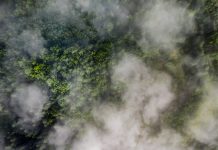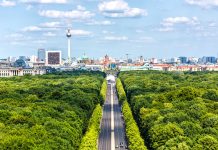The University of Liverpool highlighted the alarming scale of unsuitable reforestation efforts across Africa with a misclassification of non-forest systems to blame
The findings reveal that an area equivalent to the size of France is under threat due to misguided forest restoration initiatives primarily involving tree planting.
Reforestation with trees
The issue’s core lies in the misclassification of non-forest systems, such as savannas and grasslands, as areas needing restoration with trees. Professor Kate Parr, a leading authority on tropical ecology at the University of Liverpool, emphasised the importance of tailoring restoration efforts to the specific characteristics of each ecosystem.
Including non-forest systems in reforestation projects poses a significant risk to wildlife and local communities reliant on these ecosystems. Wildlife, such as rhinos and wildebeest, are threatened by the disruption of their habitats, while communities depending on these lands for sustenance and livelihoods may face adverse consequences.
“Restoration of ecosystems is needed and important, but it must be done in a way that is appropriate to each system.”
Dr Nicola Stevens, a Trapnell Research Fellow in African Environments at the University of Oxford and co-author of the study highlighted the urgent need for a more rigorous assessment of reforestation projects. She cautioned against rashly implemented initiatives that could result in negligible carbon sequestration benefits and potential harm to social and ecological systems.
Catering to the environment
The study’s implications extend beyond Africa, as similar challenges will likely arise in other non-forest regions worldwide. Open savannas and grasslands in countries like India and Brazil could face comparable threats if restoration efforts continue to prioritise tree planting without considering the unique characteristics of each ecosystem.
The researchers stress the importance of revising definitions to distinguish between forest and non-forest systems accurately. This clarification is crucial for ensuring restoration efforts are targeted appropriately and mitigating the risks associated with inappropriate tree planting.
Changing the approach to preserve ecosystems
The study highlights the need for a more subtle approach that considers the diversity of ecosystems and avoids blanket solutions that may do more harm than good.
Moving forward, there is a need for collaboration between researchers, policymakers, and local communities to develop sustainable strategies for restoring degraded landscapes while safeguarding biodiversity and supporting human well-being.
By raising awareness of the potential pitfalls of indiscriminate reforestation, the research provides an opportunity to steer restoration efforts more effectively and environmentally sensitively. With concerted action, it is possible to address the challenges posed by land degradation and climate change while preserving the integrity of diverse ecosystems across the globe.











